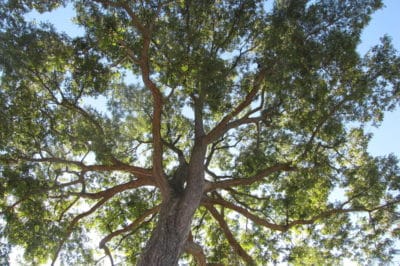Is Growing Pecan Trees Right for You?
Growing pecan trees is a good idea only if:
- Your planting site has room for two or more mature trees measuring from 75 to over 100 feet tall, with 45- to 75-foot spreads.
- You can space the trees at least 35 feet from each other or nearby structures.
- The trees can stay where they’re planted. Long taproots make transplanting them very difficult.
- You’re in USDA plant hardiness zones 6 through 9. USDA zone 5 is a possibility only if you’re planting for shade instead of nuts.
In addition to these requirements, the trees also need organically rich, freely draining soil and six or more hours of daily sun.
When to Plant
Southern and Southwestern growers plant pecans between November and February; Midwestern ones in March. The goal is to give the trees time to establish new roots before their spring growth emerges.
Purchasing Your Trees
Purchase grafted pecan trees locally to ensure they’re suited to your area. For maximum production, each tree needs to cross pollinate with a different, but compatible, cultivar. Ask your nursery about good pairings.
Expert gardener’s tip: For the best results, purchase 4- to 5-foot, container-grown trees and keep them moist until you’re ready to plant.
Preparing to Plant
To prepare the planting site, stake out the planting hole location for each tree. Clear the weeds and grass from a circular 3-foot swath around each location. Dig holes two to three times the diameter of and to the same depth as the trees’ rootballs.
Planting Your Trees
- Slide a tree gently from its container. Check the rootball for dead, damaged or encircling roots and prune them with clean, sharp pruners.
- Tease the remaining roots apart, center the tree and spread the roots evenly over the base of the hole. Be sure the grafted portion of the trunk is two or more inches above the soil line.
- Refill the hole half way and water the soil to eliminate air pockets.
- Finish replacing the soil, then tamp down with your foot to settle it.
After tamping the soil, water around the tree to soak its rootball. Repeat for each tree and you’re on the way to a homegrown pecan harvest!
